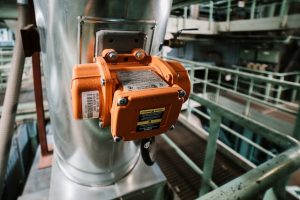If you own or use cranes, you have heard of some of the most comprehensive tips for proper crane maintenance. These include safety inspections, preventative maintenance, and load charts. But did you know that you can get historical data by performing maintenance?
Safety inspections
Safety inspections in crane maintenance are essential for a variety of reasons. These checks are designed to detect wear and tear on parts and ensure that they will continue to function correctly and safely, especially during crane relocation nashville tn. These inspections may also include reviewing the company’s records and compliance with regulations. Routine assessment of overhead cranes can save you a lot of money in the long run. In addition to ensuring compliance with regulations, these inspections will highlight any production and safety issues. Frequent routine periodic inspections can save a company significant money by identifying conditions that will cause downtime and reduce costs. In addition, regular reviews will help you save money by spreading out repair costs throughout the year, avoiding the need to spend money on emergency repairs.
Preventative maintenance
Performing preventative maintenance is crucial for extending the life of a crane, which can be crippling to a small business or a large corporation. By proactively spotting problems and fixing them before they worsen, you can keep the overall cost of ownership down. Performing preventative maintenance on your crane can also help you avoid costly “chain reactions,” The failure of one component can damage other parts of the crane.
Cranes must undergo regular inspections, and you should consider bringing in an independent contractor to perform this task for you. A qualified inspector can identify minor issues before they become significant problems, ensuring that your crane remains safe. Trained personnel should conduct these inspections to prevent accidents or other issues from escalating into more important matters. By implementing preventative maintenance for cranes, you will minimize downtime and keep your crew safe.
Load charts
When calculating crane capacity, a load chart can be beneficial. Load charts list the rated and gross capacities of a crane. Net capacity is the actual amount of weight lifted. The maximum load, a crane, can lift must not exceed this value. A load chart should also include adjusting any attachments that a crane may have. The weight of any attached handling device must be added or subtracted from the total load capacity.
The main load chart is typically fixed in the operator’s cabin. However, additional load charts should be posted inaccessible areas, such as on the crane’s platform. Operators must always refer to the load chart to check for overloading. Load charts can be stored electronically or in hard copy. A crane should never exceed its maximum lifting capacity, as overloading can cause structural components to fail or even result in a crane tipping over.
Contact interruptions with conductor bars
Overhead cranes may experience intermittent control problems due to contact interruptions. These issues can occur when carbon graphite collector brushes get worn down. As a result, these dust particles can cause electrical shorts. As a result, regular maintenance is essential to prevent these interruptions. To avoid disruption of contact, conductor bar cleaning and maintenance are vital. These procedures also ensure worker safety. If your overhead crane needs extensive care, contact a qualified technician immediately.
To keep your overhead crane in good condition, regularly check its electrical system. Its contractors may need to be replaced or rewired. Electrical lines should be checked and rewired, and the control board for the lighting signal system. In addition, you should paint the crane.
Testing of hydraulic components
Testing hydraulic components in crane maintenance are vital for crane safety and performance. Hydraulic cranes are potent machines that operate in hazardous environments. Vibration can cause parts to move outside their specified ranges and upend secure assemblies. While dirt on the crane’s exterior is not harmful, it can cause severe damage if it enters the hydraulic system. An effective preventative maintenance strategy is essential for hydraulic cranes to avoid this problem. In addition to the proper testing of components, a comprehensive maintenance program includes checking all moving parts for debris and retightening them if necessary. Fresh lubrication is also applied at regular intervals. And, of course, proper inventory management is essential to ensure that spare parts are always available.
A thorough inspection will detect problems before they become major. During this inspection, potential defects can be identified before they become a problem. Early discoveries of defects are less costly than repairing significant issues, so regular reviews are essential to ensure that your crane remains safe. Tests are conducted by experienced technicians and supported by engineers, Level III technicians, and equipment specialists.
Record-keeping
Crane maintenance records must be current. Operators should write all maintenance and repair records in a crane logbook. Crane maintenance records must communicate the current condition of the crane and recommendations and requirements for the maintenance of the crane. Operators should also be trained on all aspects of the use and care of their cranes. These documents can be a valuable tool for proving your proactive safety approach. Keeping track of these records is essential for maintaining the safety of your cranes.
Regular inspections are an integral part of crane maintenance. Monthly inspections ensure that the equipment is safe and inform you of any needed service. Monthly inspections are logged on a crane maintenance log with a sticker on each asset that records the inspector’s date, company, and name. The inspector can add multiple inspections to one sticker. Inspecting a crane daily is another critical element of maintaining a safe crane.







